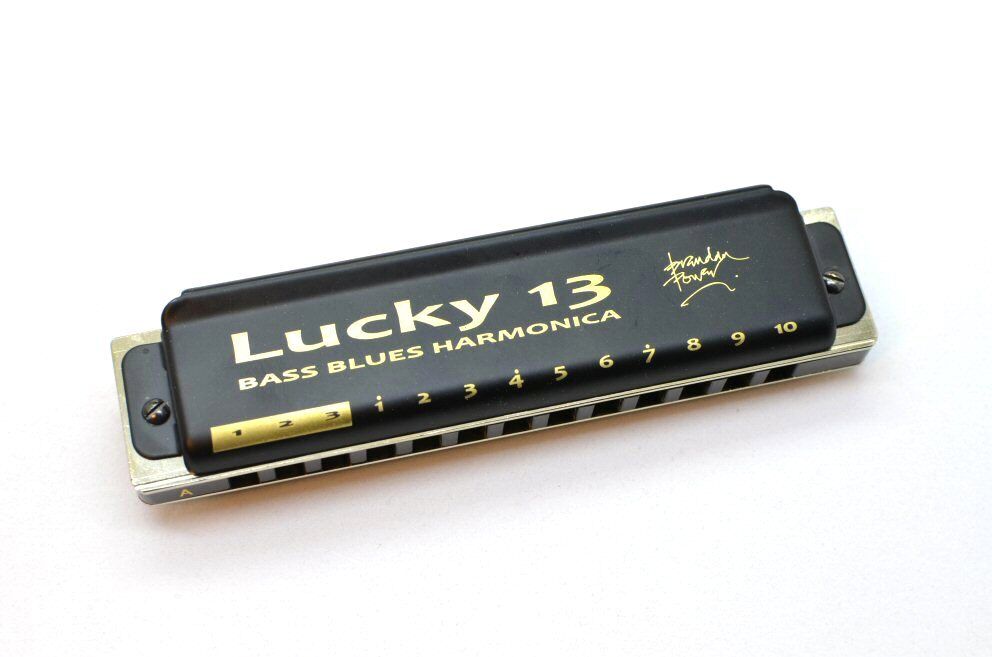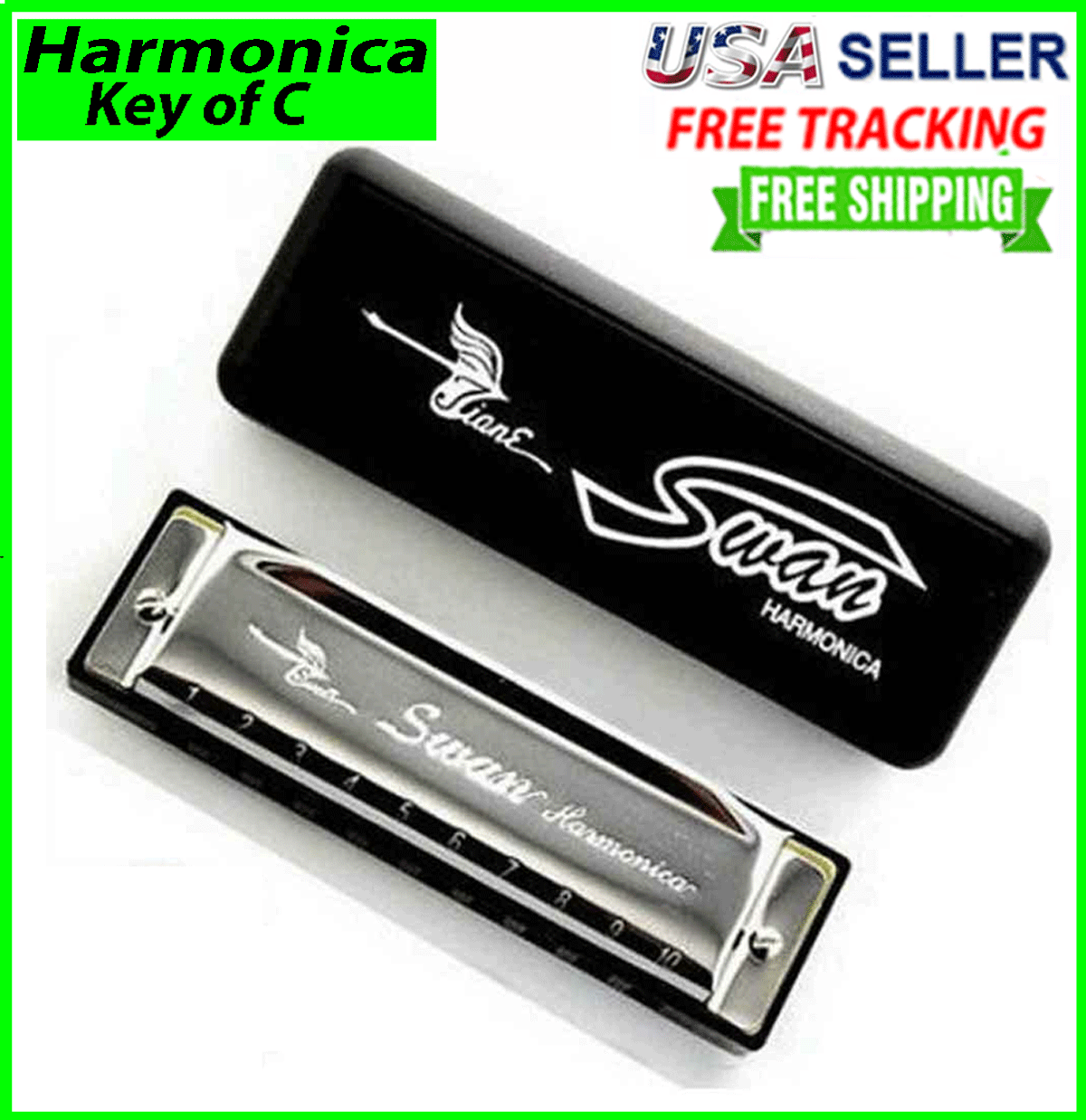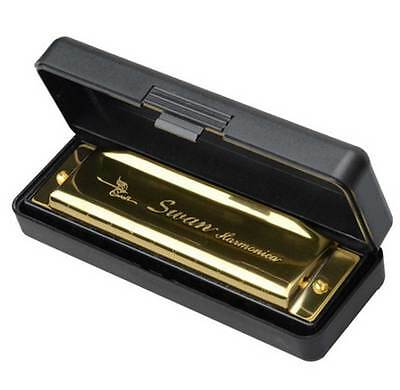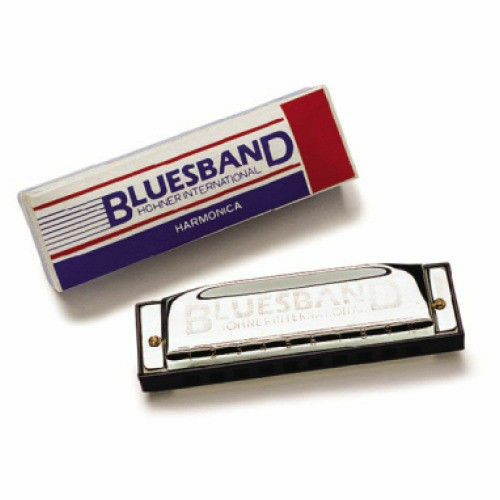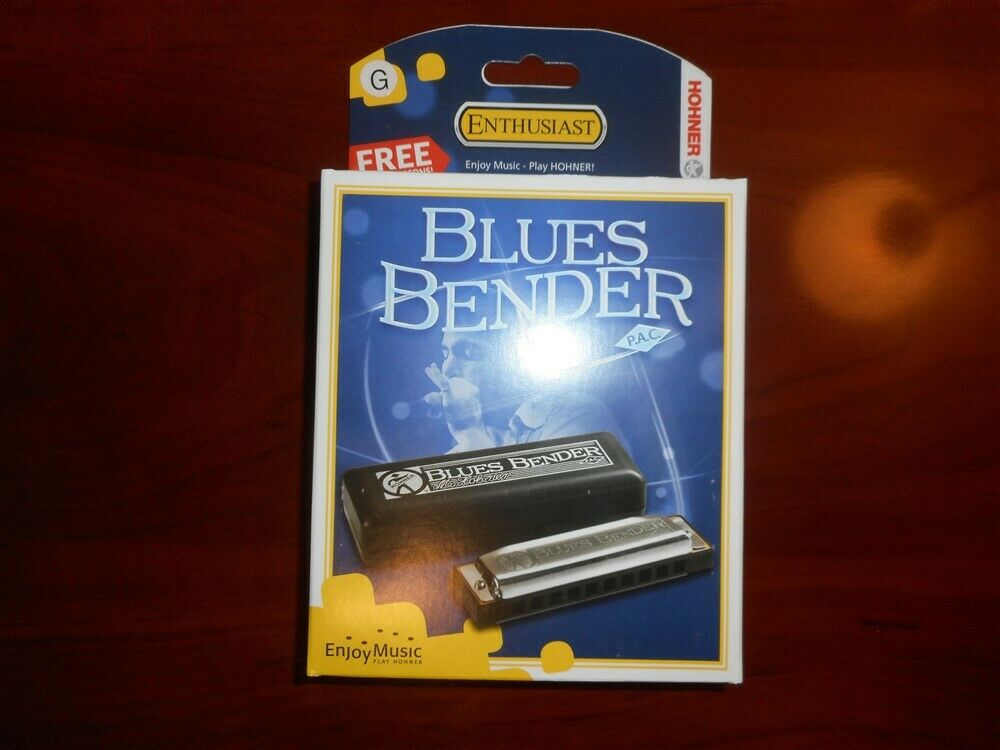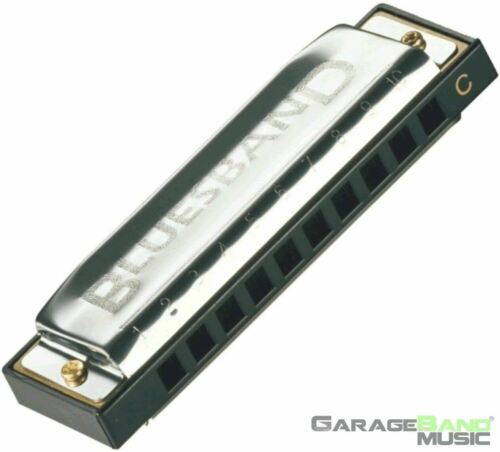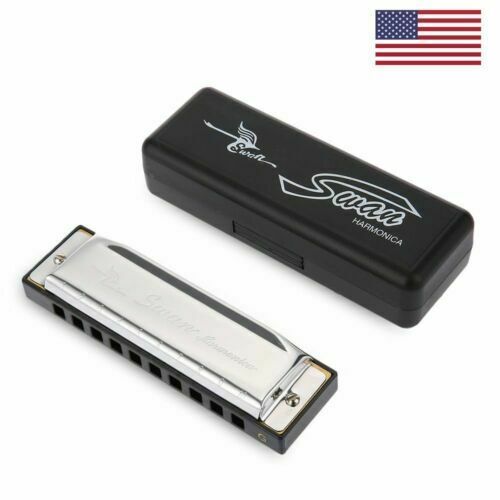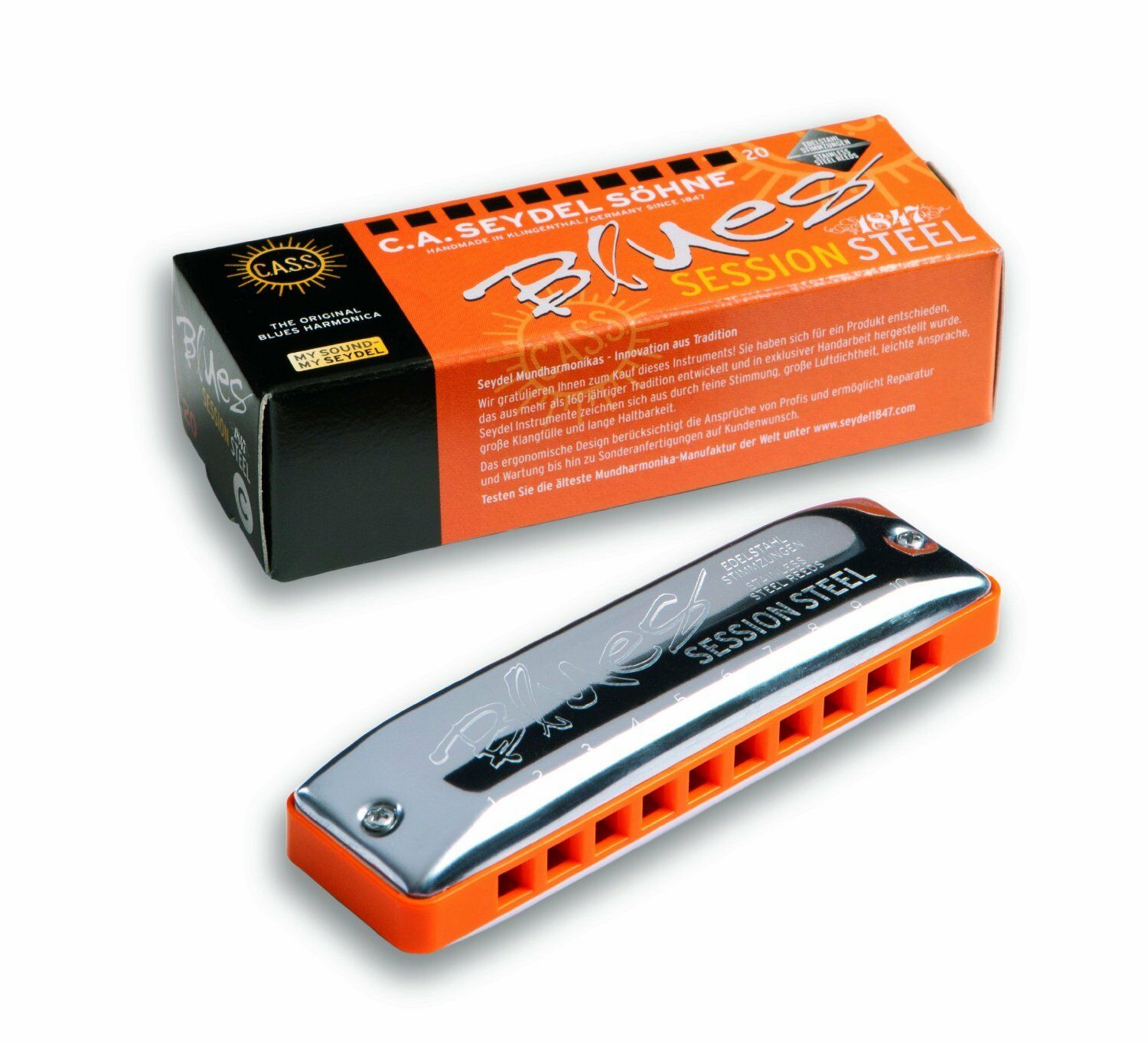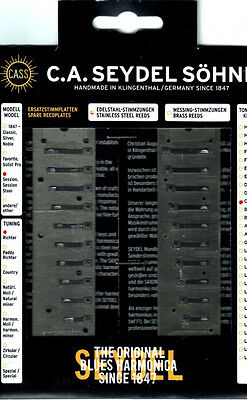-40%
Brendan Power Lucky 13 Bass Blues Harmonica Key of Db
$ 30.09
- Description
- Size Guide
Description
Brendan Power Lucky 13 Bass Blues Harmonica Key of DbWe noticed on our last stock order of standard richter Lucky 13's that some of them have new cover plates that are glossy black with tan labels. The edges and corners on these are slightly sharp.
TWO HARPS IN ONE!
HISTORY
Long Ago (1980) and Far Away (New Zealand) I started making my own custom 'Stretch Harps' in 11, 12, 13, 14 and 16 hole sizes, by slicing two normal harps and joining them back together. My 13-hole Stretch Harp was in Richter Extended tuning: normal 10-hole range plus an extra low octave on the left. It wasn't easy to make, as in those days I had to add a lot of solder to the extra low reeds as well as do the cutting/joining of parts - but the result was worth it: a 4-octave diatonic with the same hole spacing as a normal harp! I became addicted to having that extra bottom-end built in, and nicknamed the harp my 'Lucky 13'.
I later discovered I wasn't the only one to think of the Richter Extended idea back in the 1980s. Steve Baker did too and, after he became a consultant for Hohner in 1987, tried to persuade them to make a 13-hole harp (as noted in his 1990 book The Harp Handbook). They demurred, but did agree to make his SBS 4-octave model out of the Hohner 365 14-hole harp, released in 1989. Steve is to be commended for being the first to get a 4-octave harp into the market, and the SBS has a nice sound. Unfortunately it also suffers from several drawbacks, reflecting its origin as essentially a re-tuned version of an existing older harmonica: wider hole spacing than standard 10-hole harps, raw pearwood combs that can warp and crack, nailed assembly, limited range of keys, lowest key of only C, a redundant 14th hole, and a bottom cover not deep enough to stop the lowest draw reeds from rattling.
My hand-made 13-hole Stretch Harps had none of those issues. They had screwed construction, non-absorbent combs, standard diatonic 7.5mm hole spacing, and a deeper lower cover (taken from the Hohner 364 model). I also made 13-hole A, G and Bb harps with extended range below the standard keys - not an octave higher as with the SBS. Other players liked them too, and I decided to make a fully-optimised Lucky 13 that anyone could buy.
THE MODERN LUCKY 13
I pitched the idea to the respected Chinese Easttop harmonica company in October 2014. They liked the concept, and were willing to invest in the considerable cost of molds and tooling to make the all-new comb, reedplates, and covers for this unique harmonica. In the nearly two years since then we have worked together on every detail to make the Lucky 13 the very best it can be, and I'm really proud of the result.
The Lucky 13 has it all: the standard range you're used to plus that Big Bottom, right there in your hands! Once you get used to a 4-octave Bass Blues Harmonica it is very hard to go back to the restricted range of a 10-hole harp ever again. It's two harps for the price of one: normal and low range, without having to buy/store both or switch harps in a tune.
Here are the main features!
World's first 13-hole harp, Patent Pending.
Exactly 4 octave range in Richter tuning, with lower octave tagged on to normal 10-hole range.
The same 7.5mm hole spacing as a normal 10-hole harp! That means it's easy to adapt to.
Comfortable curved top cover, bottom cover raised at the bass end so the draw reeds never rattle.
Holes in the cover plate ends, for extra volume.
Solid comb, flat-sanded.
Durable phosphor-bronze reeds.
Thick chromed reed plates, secured with 11 screws for uniform airtightness.
Clear visual numbering on top cover relates to the 10-hole diatonic, to make sure you never lose your place.
Key indicators on front and ends of the comb, for those who like to stack harps vertically.
Perfect for low chord rhythm or melody lines, and extended octave playing.
Possible to retune the lower 3 holes to create new chords or extended alt tunings.
